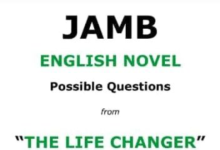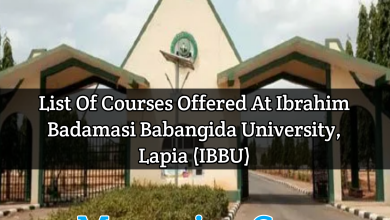NECO GCE 2023 Christian Religious Studies (CRS) Questions and Answers (Essay & Objective)

NECO GCE 2023 Christian Religious Studies (CRS) Questions and Answers (Essay & Objective)
Thursday 23rd Nov, 2023
- Christian Religious Studies Paper III & II (Objective & Essay) – 2.00 pm – 4.30 pm
Joint Our Whatsapp Group For Answers👇👇
QUESTIONS PAPERS


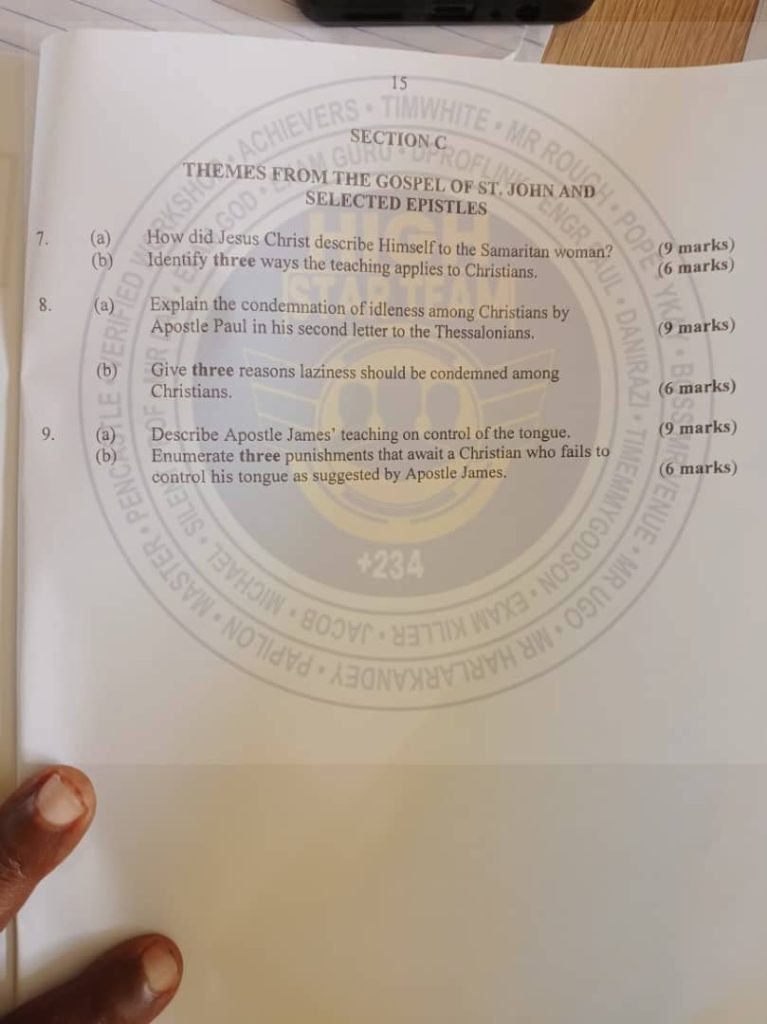
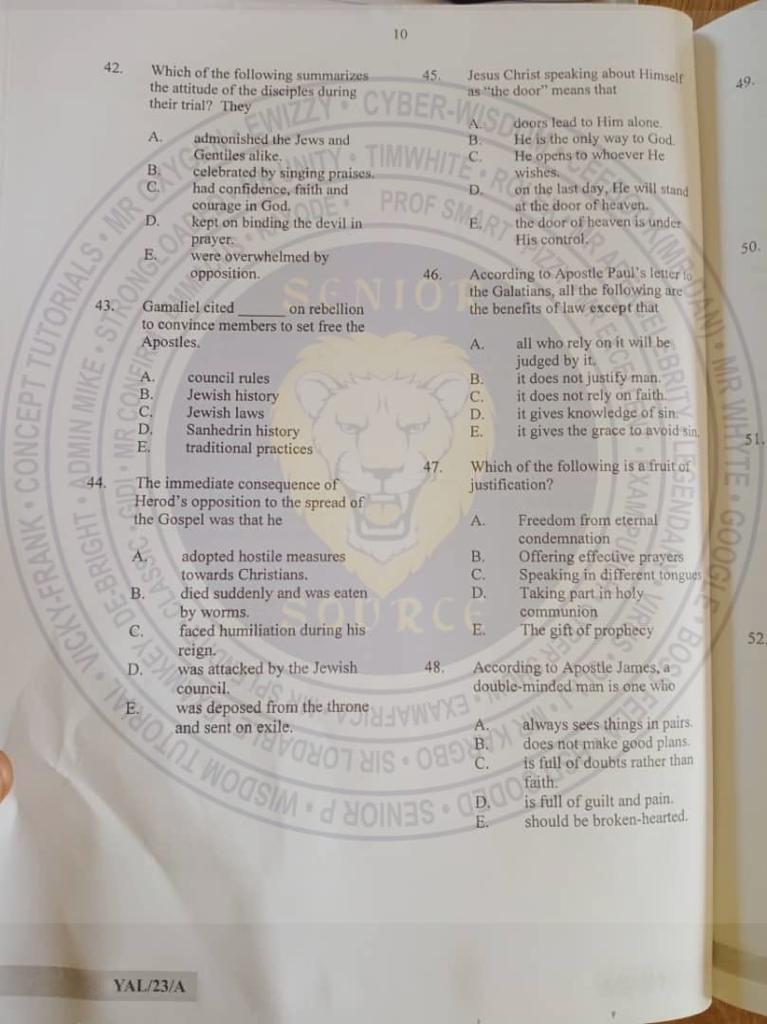
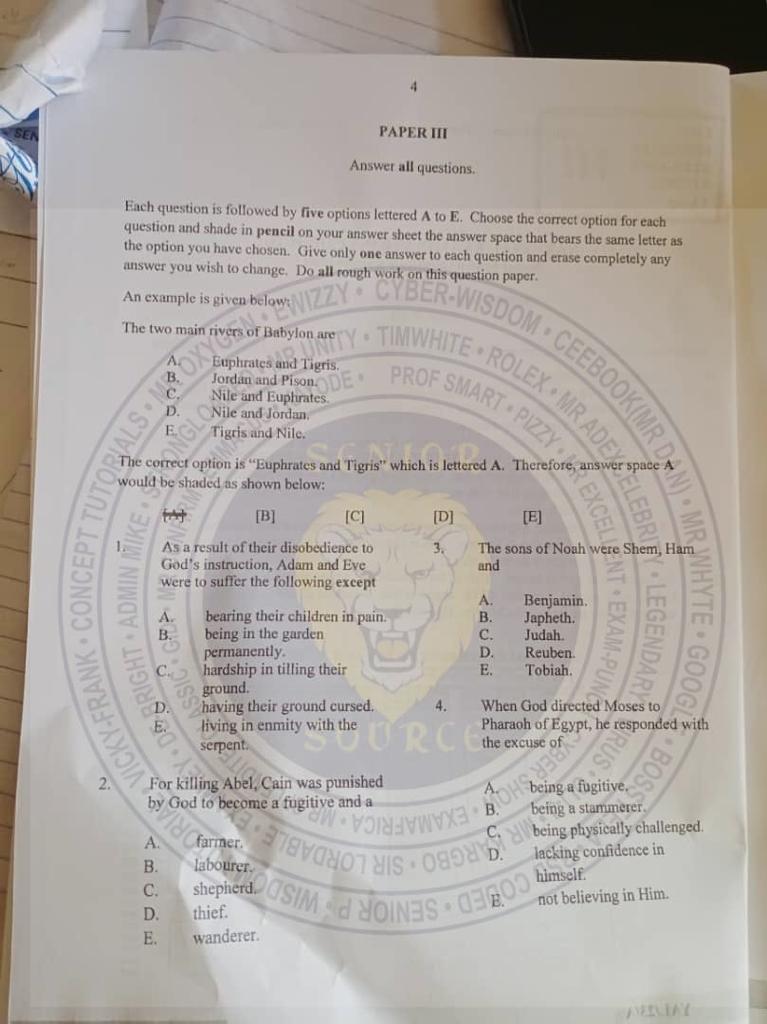
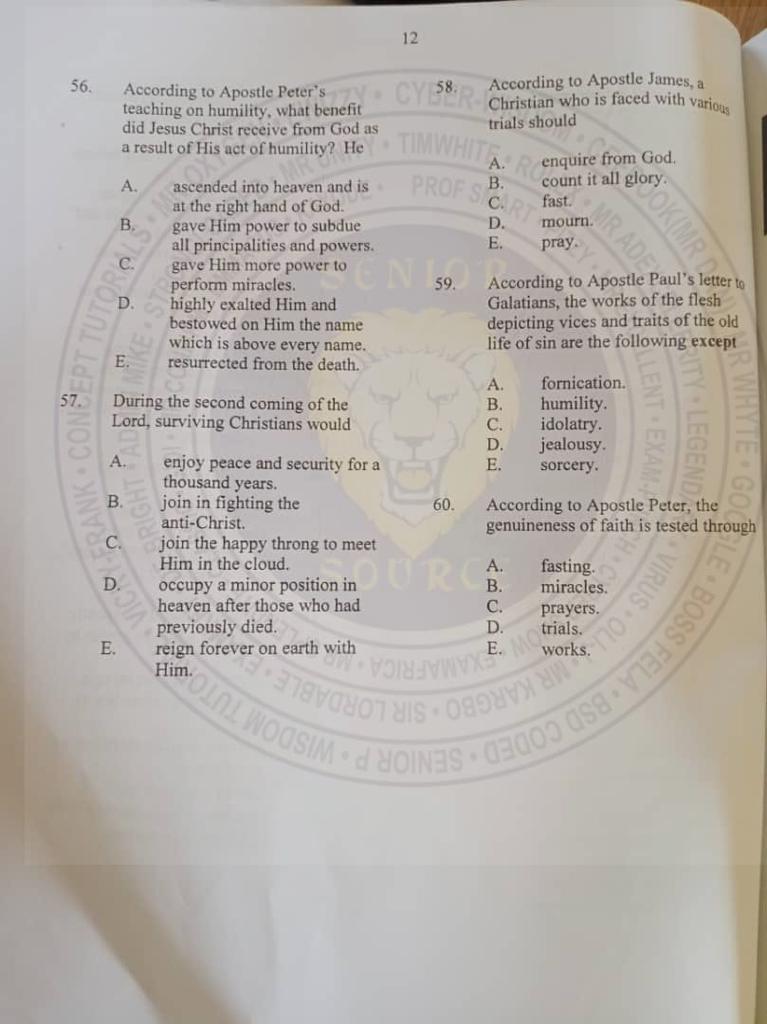
Please click this to joint our WhatsApps group for Midnight Questions and Answers
Joint Our Whatsapp Group For Answers
OBJECTIVES ANSWERS
(Q1-60)
1-10: BEBBACCBCD
11-20: EDDEBECBAE
21-30: BCBAEDEDED
31-40: CACEAAEDBE
41-50: DCBBBEACBC
51-60: EEBADDCBBE
ESSAY ANSWERS
(Q1)
(1a)
In the second creation story, as contained in Genesis chapter 2, the narrative begins by stating that after God had created the heavens and the earth, He formed man from the dust of the ground and breathed into his nostrils the breath of life, making him a living being. God then planted a garden in Eden and placed the man in it, giving him the responsibility to work it and take care of it.
God also commanded the man, stating that he could eat from any tree in the garden except for the tree of the knowledge of good and evil. If he were to eat from that tree, he would surely die. God then noticed that it was not good for the man to be alone, so He decided to make a helper suitable for him.
God brought all the animals to the man, and he named them all, but none of them were found to be a suitable helper. So, God caused the man to fall into a deep sleep, and while he was asleep, He took one of his ribs and made it into a woman. When the man woke up and saw the woman, he recognized her as his own flesh and bone, and they became one flesh.
(1b)
(PICK ANY THREE)
(i) Stewards of Creation
(ii) Creation of Social Relationships
(iii) Naming and Naming Responsibility
(iv) Responsibility to Obey God’s Command
(iv) The Gift of Life
(vi) Unity and Companionship
(Q3)
(3a)
Prophet Hosea’s marital experience is a significant aspect of his prophetic ministry. According to the Bible, Hosea was instructed by God to marry a woman named Gomer, who later became unfaithful to him, symbolizing the unfaithfulness of Israel towards God.
Hosea’s marriage to Gomer represented the relationship between God and Israel, with Hosea embodying God’s faithfulness despite Israel’s spiritual adultery. Despite Gomer’s infidelity, Hosea continued to love her and even redeemed her from a situation of slavery, reflecting God’s unconditional love and forgiveness for Israel.
Through this personal experience, Hosea conveyed God’s message of love, mercy, and the consequences of unfaithfulness. His marital life served as a powerful illustration of God’s enduring love for His people, despite their waywardness and unfaithfulness.
(3b)
(i) Covenant and Commitment: Marriage symbolizes God’s covenant with humanity. Just as a marriage is a covenant between two individuals to love, cherish, and remain faithful to each other, God’s commitment to humanity is everlasting and unwavering, demonstrating His unending love and faithfulness.
(ii) Selfless Sacrifice: The sacrificial love between spouses mirrors God’s sacrificial love for humanity. In marriage, partners are called to love each other unconditionally, putting their partner’s needs above their own. This selfless love is akin to the sacrificial love shown by Jesus Christ for humanity.
(iii) Unity and Oneness: The union of two individuals into one entity in marriage reflects the unity found in the relationship between God and humanity. Just as marriage signifies the unity of two distinct individuals becoming one, God desires a close and unified relationship with humanity, emphasizing the concept of oneness and togetherness.
(Q6)
(A)
The Council of Jerusalem, a pivotal event in early Christianity, took place around 50 AD and is described in the Book of Acts, specifically in Acts 15:1-29. The primary issue at hand was whether Gentile believers needed to adhere to Jewish customs, particularly circumcision, in order to be considered part of the Christian community.
The gathering brought together apostles, elders, and believers to address the growing tension between Jewish and Gentile followers of Jesus. The atmosphere was charged with debate and differing opinions. Some argued for the strict observance of Jewish laws and traditions, emphasizing the need for Gentiles to be circumcised. Others, including the apostle Paul and Barnabas, advocated for the inclusion of Gentiles without imposing Jewish customs upon them.
Amidst the debates, Peter, who had already witnessed the conversion of the Gentile Cornelius, spoke in favor of not burdening the Gentiles with the yoke of Jewish legalism. He emphasized that both Jews and Gentiles are saved through the grace of the Lord Jesus Christ.
James, the brother of Jesus and a prominent leader in the early Christian community, played a crucial role in proposing a resolution. He suggested a compromise that would not alienate the Gentile believers while still maintaining unity within the diverse Christian community. The resolution, accepted by the council, outlined that Gentiles should abstain from idolatry, sexual immorality, consuming blood, and strangled animals. This decision reflected a significant shift from strict adherence to Jewish laws to a more inclusive approach, welcoming Gentiles into the Christian fold without imposing unnecessary cultural requirements.
The Council of Jerusalem marked a crucial moment in the development of Christianity, establishing a precedent for a faith that transcended cultural and ethnic boundaries. The decisions made during this council laid the foundation for a more inclusive and diverse Christian community, setting the stage for the global spread of the Christian faith in the centuries to come.
(B)
(i) Inclusivity and Unity: The Council of Jerusalem teaches the importance of fostering inclusivity within a diverse community. The decision to not impose unnecessary Jewish customs on Gentile believers demonstrated a commitment to unity despite cultural differences. This lesson is relevant in contemporary contexts, emphasizing the need for inclusivity and acceptance within religious, cultural, and social communities.
(ii) Leadership and Decision-Making: The meeting showcased effective leadership and decision-making within the early Christian community. James, as a leader, proposed a resolution that sought a middle ground, considering the perspectives of both Jewish and Gentile believers. This highlights the significance of leadership that listens to diverse opinions, seeks compromise, and works towards decisions that benefit the entire community.
(iii) Grace and Freedom in Faith: The Council of Jerusalem underscored the central theme of grace in Christian theology. The decision to abstain only from specific practices, rather than imposing an array of Jewish laws, reflected an understanding of freedom in Christ. This lesson encourages believers to focus on the core principles of faith and grace, allowing for diversity in cultural expressions and practices without compromising the essence of the faith.


